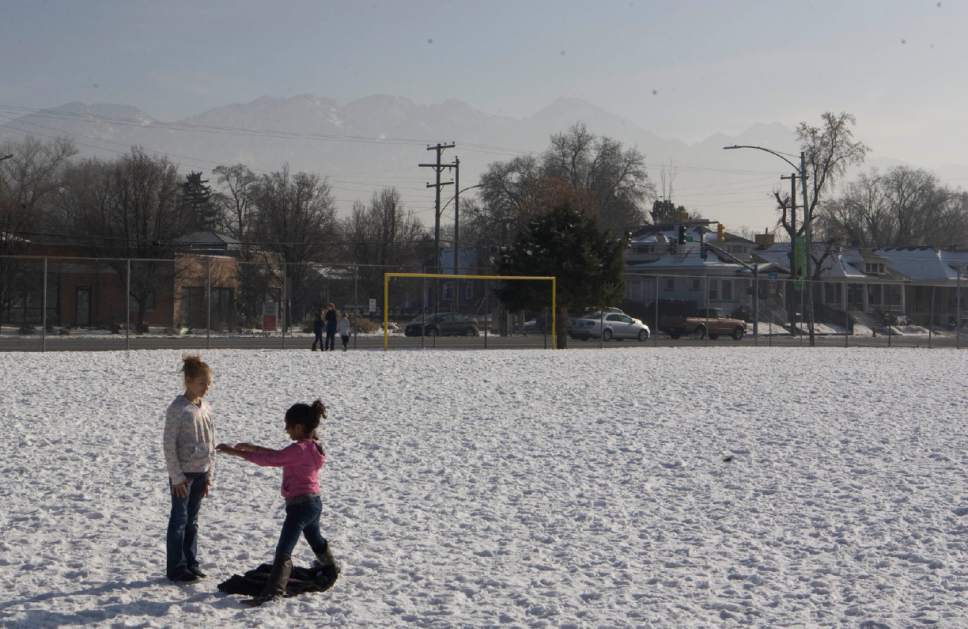This is an archived article that was published on sltrib.com in 2016, and information in the article may be outdated. It is provided only for personal research purposes and may not be reprinted.
Utah schools are being told to play it safe before sending students outside for recess this winter.
New guidelines from the Utah Department of Health lower the bar for when students should be kept indoors due to poor air quality.
"Their lungs are still developing," said Brittney Guerra, a specialist with the Utah Asthma Program. "They're a sensitive group."
The new recommendations call for all students to be kept indoors when levels of fine particulate matter, or PM 2.5, reach 55.5 micrograms per cubic meter — enough to earn either a "red" or "purple" on the state's air quality color scale.
When particulate matter levels reach 35.5, or an "orange" air day, the department recommends indoor accommodations for students showing respiratory symptoms, like coughing or shortness of breath, and for students with asthma, chronic lung disease or other pre-existing respiratory conditions.
The guidelines were updated following summer meetings that included representatives from public and higher education, state health departments, environmental activists and the state's medical industry, Guerra said.
Prior to the update, schools were told to allow indoor recess for sensitive students on "orange" days and symptomatic students on "red" days, with all students brought indoors after particulate levels exceeded 90 micrograms.
The 90-microgram level doesn't correspond with a color baseline on the air quality scale, which Guerra said made it less clear for local school administrators when full indoor recess was needed.
"It's easier with communication and a little more protective," she said of the new recommendations.
Guerra said the changes should account for no more than two or three additional indoor recess days during the inversion season, which runs from November through February.
Last year, Salt Lake County had a single "orange" air day, when fine particulate matter levels were between 33.5 and 55.4 micrograms per meter cubed, according to the Utah Department of Health. The level of PM 2.5 never reached a point where schools would be encouraged to keep all students indoors, even under the revamped lower threshold.
Guerra said air quality is one of several factors, like weather and temperature, that can result in schools holding recess indoors. Those decisions, she said, are up to local administrators and can be affected by the logistics of staffing and facility needs.
"We try to promote indoor recess," she said, "but that can be very difficult for schools to accomplish."
In Granite School District, school administrators are instructed to check air quality levels each day, district spokesman Ben Horsley said.
He said the district's recess policy is to follow the guidelines established by the Utah Health Department.
"We don't consider ourselves health experts," he said. "We are reliant on their expertise in this area to ensure the safety and well-being of our children."
Limited space and supervision make indoor recess days challenging, Horsley said, but schools are able to respond to situations where students aren't able to go outside.
"It is something that we plan for on a regular basis throughout the year," he said, "whether it be air-quality related or weather-related."
Twitter: @bjaminwood



